
Latest
"Computerised interpretation of fetal heart rate during labour (INFANT): a randomised controlled trial"
The INFANT Collaborative Group, E. Schroeder (March 2017).
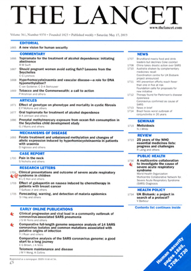
Summary
Background Continuous electronic fetal heart-rate monitoring is widely used during labour, and computerised
interpretation could increase its usefulness. We aimed to establish whether the addition of decision-support software
to assist in the interpretation of cardiotocographs affected the number of poor neonatal outcomes.
Methods
In this unmasked randomised controlled trial, we recruited women in labour aged 16 years or older having
continuous electronic fetal monitoring, with a singleton or twin pregnancy, and at 35 weeks’ gestation or more at 24
maternity units in the UK and Ireland. They were randomly assigned (1:1) to decision support with the INFANT
system or no decision support via a computer-generated strati ed block randomisation schedule. The primary
outcomes were poor neonatal outcome (intrapartum stillbirth or early neonatal death excluding lethal congenital
anomalies, or neonatal encephalopathy, admission to the neonatal unit within 24 h for ≥48 h with evidence of
feeding di culties, respiratory illness, or encephalopathy with evidence of compromise at birth), and developmental
assessment at age 2 years in a subset of surviving children. Analyses were done by intention to treat. This trial is
completed and is registered with the ISRCTN Registry, number 98680152.
Results
Between Jan 6, 2010, and Aug 31, 2013, 47 062 women were randomly assigned (23 515 in the decision-
support group and 23 547 in the no-decision-support group) and 46 042 were analysed (22 987 in the decision-support
group and 23055 in the no-decision-support group). We noted no di erence in the incidence of poor neonatal
outcome between the groups—172 (0·7%) babies in the decision-support group compared with 171 (0·7%) babies in
the no-decision-support group (adjusted risk ratio 1·01, 95% CI 0·82–1·25). At 2 years, no signi cant di erences were
noted in terms of developmental assessment.
Interpretation
Use of computerised interpretation of cardiotocographs in women who have continuous electronic
fetal monitoring in labour does not improve clinical outcomes for mothers or babies.
"Understanding what matters: an exploratory study to investigate the views of the general public for priority setting criteria in health care"
'Julie Ratcliffe, Emily Lancsar, Ruth Walker and Yuanyuan Gu (2017)
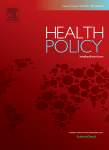
Health care policy makers internationally are increasingly expressing commitment to consultation with, and incorporation of, the views of the general public into the formulation of health policy and the process of setting health care priorities. In practice, however, there are relatively few opportunities for the general public to be involved in health care decision- making. In making resource allocation decisions, funders, tasked with managing scarce health care resources, are often faced with difficult decisions in balancing efficiency with equity considerations. A mixed methods (qualitative and quantitative) approach incorporating focus group discussions and a ranking exercise was utilised to develop a comprehensive list of potential criteria for setting priorities in health care formulated from the perspective of members of the general public in Australia. A strong level of congruence was found in terms of the rankings of the key criteria with the size of the health gain, clinical effectiveness, and the ability to provide quality of life improvements identified consistently as the three most important criteria for prioritising the funding of an intervention. Findings from this study will be incorporated into a novel DCE framework to explore how decision makers and members of the general public prioritize and trade off different types of health gain and to quantify the weights attached to specific efficiency and equity criteria in the priority setting process.
Past
"Long-term health care costs for patients with prostate cancer: A population-wide longitudinal study in New South Wales, Australia"
by Paula Cronin (1), Brent Kirkbride (1), Albert Bang(2), Bonny Parkinson (1, 5), David Smith (2, 3, 4), Philip Hayward (1) (2016)
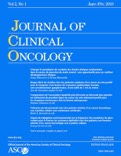
Aim
Prostate cancer (PCa) is the most commonly diagnosed cancer in Australian males. There are limited data on the long-term health system costs associated with PCa. The aim of this study is to estimate long-term health care costs of PCa.
Methods
We estimated the health system costs for a cohort of 1873 males diagnosed with PCa between 2000 and 2002, using linked medical, pharmaceutical and hospital data. Treatment was defined by an initial phase, measuring health care costs up to 6 months following diagnosis and a continuing phase (including metastatic treatment), measuring treatments to 9.5 years. Nonparametric models were used to calculate average health care costs by PCa risk groups at diagnosis (low to metastatic) and treatment pathways.
Results
Health system costs increased with increasing PCa risk category, from $16 923 (low risk) to $39 101 (metastatic risk group). For men with initial localized risk, costs were $8 454 for the active surveillance treatment pathway, $9621 for external beam radiation therapy/brachytherapy, $19 210 for androgen deprivation therapy, $20 636 for radical prostatectomy, $21 161 for radical prostatectomy + external beam radiation therapy/brachytherapy, $21 388 for any of the treatments previously listed + androgen deprivation therapy, with an additional cost of $55 370 if metastatic treatment was undertaken.
Conclusions
Treatment costs are highest during two phases over the natural cycle of the disease, the initial diagnosis phase and the metastatic treatment phase. Both the initial phase costs and low-risk category costs are driven largely by the rates of radical prostatectomy. Our study provides comprehensive long-term estimates of PCa costs.
(1) Centre for Health Economics Research and Evaluation (CHERE), University of Technology Sydney, (2) Cancer Council NSW, Sydney, New South Wales, (3) Menzies Health Institute Queensland, Griffth University, Queensland, (4) Sydney Medical School, The University of Sydney, Sydney, Australia, (5) Macquarie University Centre for the Health Economy.
"Real-World Evidence: A Comparison of the Australian Herceptin Program and Clinical Trials of Trastuzumab for HER2-Positive Metastatic Breast Cancer"
by Bonny Parkinson, Rosalie Viney, Marion Haas, Stephen Goodall, Preeyaporn Srasuebkul, Sallie-Anne Pearson (2016)
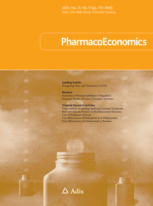 Estimating the real-world cost-effectiveness of a new drug relies on understanding the differences between clinical trial data (pre-reimbursement) and clinical practice (post-reimbursement). This is important for decision makers when reviewing reimbursement decisions, prices, and considering other drugs for the same condition. Differences can arise from differences in patient characteristics, but also from the availability of new evidence and evolving treatment practices. This paper examines these issues using a case study.
Estimating the real-world cost-effectiveness of a new drug relies on understanding the differences between clinical trial data (pre-reimbursement) and clinical practice (post-reimbursement). This is important for decision makers when reviewing reimbursement decisions, prices, and considering other drugs for the same condition. Differences can arise from differences in patient characteristics, but also from the availability of new evidence and evolving treatment practices. This paper examines these issues using a case study.
Methods
In 2001, the Australian Government funded trastuzumab for the treatment of HER2+ metastatic breast cancer through the Herceptin Program. The administrative arrangements of the Program resulted in rich observational data that captured information about patients treated with trastuzumab between 2001 and 2010 (n = 3830). The dataset included patient characteristics, dispensed medicines, medical service use and date of death.
Results
Compared to participants in the clinical trials, patients were older, received more prior chemotherapies and a broader range of co-administered chemotherapies. Treatment practices differed from the clinical trials, but also changed over time. For example, in situ hybridization testing, rather than immunohistochemistry testing, and a three weekly administration schedule, rather than one weekly, were increasingly used. Compared to the clinical trials, patients administered trastuzumab with a concomitant chemotherapy generally experienced longer overall survival (151.3 weeks, 95 % CI: 142.6, 163.4), while those who received trastuzumab as a monotherapy experienced shorter overall survival (94.4 weeks, 95%CI: 86.4, 102.9). These findings may be due to a differing relative treatment effect in clinical practice, but may also be due to a range of other factors.
Conclusion
This analysis demonstrates the challenges for decision makers that arise because new evidence and evolving treatment practices create a gap between clinical trial data and real-world clinical practice and outcomes.
"Crime victimisation, neighbourhood safety and happiness in China" Economic Modelling, 51, 424-435
by Zhiming Cheng and Russell Smith (2015)
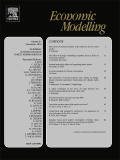 We examine the relationship between happiness, crime victimization and neighbourhood safety in China. We find that being a victim of crime, and having an acquaintance who is a victim of crime, have a negative effect on happiness. The cost of compensating someone who is a victim of crime, such that they are returned to the same position as if they had not been victimized, is similar to the cost of compensating someone who has an acquaintance who is a victim of crime (around 60% of annual household income). Females who are victims of crime, and victims of out-of-home theft and assault/threat, feel less victimized if they have an acquaintance who is also a victim of crime with whom to share their experience. Living in a safe neighbourhood has a positive effect on happiness. The amount needed to compensate someone for living in an unsafe, or neutral neighbourhood, as opposed to safe neighbourhood, is 1500% of annual household income, which is much higher than the shadow price suggested in studies for the United States and United Kingdom.
We examine the relationship between happiness, crime victimization and neighbourhood safety in China. We find that being a victim of crime, and having an acquaintance who is a victim of crime, have a negative effect on happiness. The cost of compensating someone who is a victim of crime, such that they are returned to the same position as if they had not been victimized, is similar to the cost of compensating someone who has an acquaintance who is a victim of crime (around 60% of annual household income). Females who are victims of crime, and victims of out-of-home theft and assault/threat, feel less victimized if they have an acquaintance who is also a victim of crime with whom to share their experience. Living in a safe neighbourhood has a positive effect on happiness. The amount needed to compensate someone for living in an unsafe, or neutral neighbourhood, as opposed to safe neighbourhood, is 1500% of annual household income, which is much higher than the shadow price suggested in studies for the United States and United Kingdom.
"Disinvestment and Value-Based Purchasing Strategies for Pharmaceuticals: An International Review" Pharmacoeconomics, Volume 33, Issue 9, 905-924
by Bonny Parkinson, Catherine Sermet, Fiona Clement, Steffan Crausaz, Brian Godman, Sarah Garner, Moni Choudhury, Sallie-Anne Pearson, Rosalie Viney, Ruth Lopert, Adam G. Elshaug (2015)
 Pharmaceutical expenditure has increased rapidly across many Organisation for Economic Cooperation and Development (OECD) countries over the past three decades. This growth is an increasing concern for governments and other third-party payers seeking to provide equitable and comprehensive healthcare within sustainable budgets. In order to create headroom for increasing utilisation, and to fund new high-cost therapies, there is an active push to ‘disinvest’ from low-value drugs.
Pharmaceutical expenditure has increased rapidly across many Organisation for Economic Cooperation and Development (OECD) countries over the past three decades. This growth is an increasing concern for governments and other third-party payers seeking to provide equitable and comprehensive healthcare within sustainable budgets. In order to create headroom for increasing utilisation, and to fund new high-cost therapies, there is an active push to ‘disinvest’ from low-value drugs.
The aim of this article is to review how reimbursement policy decision makers have sought to partially or completely disinvest from drugs in a range of OECD countries (UK, France, Canada, Australia and New Zealand) where they are publicly funded or subsidised. We employed a systematic literature search strategy and the incorporation of grey literature known to the authorship team. We canvass key policy instruments from each country to outline key approaches to the identification of candidate drugs for disinvestment assessment (passive approaches vs. more active approaches); methods of disinvestment and value-based purchasing (de-listing, restricting treatment, price or reimbursement rate reductions, encouraging generic prescribing); lessons learnt from the various approaches; the potential role of coverage with evidence development; and the need for careful stakeholder management.
Dedicated sections are provided with detailed coverage of policy approaches (with drug examples) from each country. Historically, countries have relied on ‘passive disinvestment’; however, due to (1) the availability of new cost-effectiveness evidence, or (2) ‘leakage’ in drug utilisation, or (3) market failure in terms of price competition, there is an increasing focus towards ‘active disinvestment’. Isolating low-value drugs that would create headroom for innovative new products to enter the market is also motivating disinvestment efforts by multiple parties, including industry. Historically, disinvestment has mainly taken the form of price reductions, especially when market failures are perceived to exist, and restricting treatment to subpopulations, particularly when a drug is no longer considered value for money. There is considerable experimentation internationally in mechanisms for disinvestment and the opportunity for countries to learn from each other. Ongoing evaluation of disinvestment strategies is essential, and ought to be reported in the peer-reviewed literature.